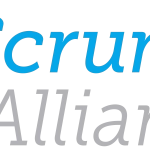Earned Value Analysis (EVA) is a powerful project management tool that helps project managers to track and analyze the performance of their projects. EVA provides a comprehensive view of project performance by integrating cost, schedule, and scope data.
What is Earned Value Analysis?
Earned Value Analysis is a project management method that compares the project’s actual performance to its planned performance. EVA provides a way to measure project progress and forecast future performance based on past performance. EVA can help project managers to identify problems early and take corrective action to keep the project on track.
clslearn offers you the best courses in the course of business management
Purpose of Earned Value

The purpose of Earned Value is to provide a comprehensive view of project performance by integrating cost, schedule, and scope data. EVA helps project managers to answer the following questions:
Are we on schedule?
Are we within budget?
Are we meeting the project scope?
What is the present condition of the project?
What is the forecasted project outcome?
What are the Earned Value Methods Data Source?
The data sources for EVA methods are the project’s actual cost, schedule, and scope data. The actual cost data is obtained from the project’s accounting system and includes data on labor, material, and equipment costs. The actual schedule data is obtained from the project schedule and includes data on the start and finish dates of project activities. The actual scope data is obtained from the project scope statement and includes data on the project deliverables.
Requirements for Earned Value Analysis
To perform EVA, project managers need the following requirements:
- A baseline plan that includes the project’s scope, schedule, and budget.
- A project accounting system that tracks actual costs.
- A project schedule that tracks actual progress.
- A system for measuring and reporting project progress.
- EVM Fundamental Concepts
The fundamental concepts of EVA are:

Planned Value (PV): The planned value is the budgeted cost of the work scheduled to be completed.
Actual Cost (AC): The actual cost is the total cost incurred for the work completed.
Earned Value (EV): The earned value is the budgeted cost of the work completed.
The Cost Variance (CV) is the variance between the earned value and the actual cost.
Schedule Variance (SV): The schedule variance is the difference between the earned value and the planned value.
Cost Performance Index (CPI): The cost performance index is the ratio of earned value to actual cost.
Schedule Performance Index (SPI): The schedule performance index is the ratio of earned value to planned value.
Earned Value Analysis (EVA) is a technique for measuring project performance that integrates cost, schedule, and scope data. It compares the planned value of the project work with the actual value of the work completed to assess the project’s current status and forecast its future performance. EVA provides a comprehensive view of project performance and enables project managers to identify potential problems early and take corrective measures.
EVA’s significant advantage is that it allows project managers to predict the ultimate cost and duration of the project by analyzing its present performance. Project managers can evaluate whether the project is meeting its budget and schedule objectives by computing the Cost Performance Index (CPI) and Schedule Performance Index (SPI) through which they can assess its progress. If the CPI or SPI is less than 1, it indicates that the project is behind schedule or over budget and corrective action needs to be taken.
EVA also provides project managers with a way to measure the value of the work completed to date. Earned Value (EV) is the budgeted cost of the work that has been completed, representing the value of the work that has been accomplished so far. By comparing the EV with the Actual Cost (AC), project managers can determine whether the project is under or over budget. If the EV is less than the AC, it indicates that the project is over budget and corrective action needs to be taken.
In addition to measuring performance, EVA can also be used to forecast future project performance. By calculating the Estimate at Completion (EAC), project managers can estimate the final cost of the project based on its current performance. The Estimate at Completion (EAC) can be calculated through various methods, such as the Budget at Completion (BAC) method, the EAC with Cost Performance Index (CPI) method, and the EAC with both CPI and Schedule Performance Index (SPI) methods.
Overall, Earned Value Analysis is a powerful project management tool that provides project managers with a comprehensive view of project performance. By integrating cost, schedule, and scope data, EVA enables project managers to identify potential problems early and take corrective action to keep the project on track.
How can a project manager adjust the project schedule to make up for lost time?

In case the Earned Value Analysis reveals that the project is falling behind schedule, the project manager may need to revise the project schedule to compensate for the lost time.
An experienced project manager can make changes to the project schedule by:
Adding more personnel to the project or increasing daily work hours can be used to speed up completion by reallocating more resources.
A project manager can prioritize critical tasks and ensure that they are completed on time while postponing or rescheduling non-critical tasks.
Fast-track tasks: The project manager can fast-track tasks by overlapping tasks that were originally planned to be done sequentially, but can now be done simultaneously to save time.
Delay non-critical tasks: The project manager can delay non-critical tasks to free up resources and focus on critical tasks that are behind schedule.
Negotiate with stakeholders: The project manager can negotiate with stakeholders to adjust project deadlines or deliverables to allow more time to complete critical tasks.
Implement a recovery plan: If the project is significantly behind schedule, the project manager may need to implement a recovery plan, which involves taking more drastic measures such as working overtime, hiring additional staff, or resequencing tasks.
Project managers need to communicate any modifications to the project schedule to the project team, stakeholders, and sponsors. This ensures that they are informed of any adjustments to the timeline and any potential impact on the budget or scope.
An EVA helps project managers track and analyze their projects’ performance. EVA provides a comprehensive view of project performance by integrating cost, schedule, and scope data. By using EVA, project managers can identify problems early and take corrective action to keep the project on track.
























